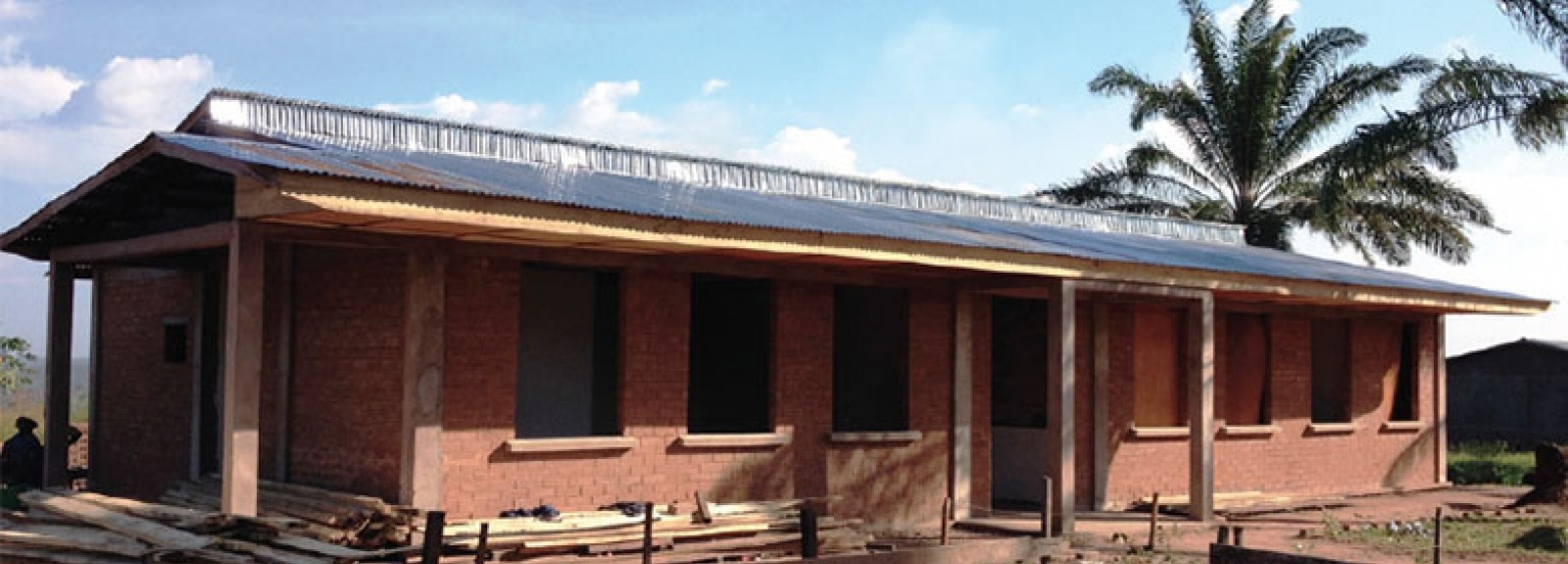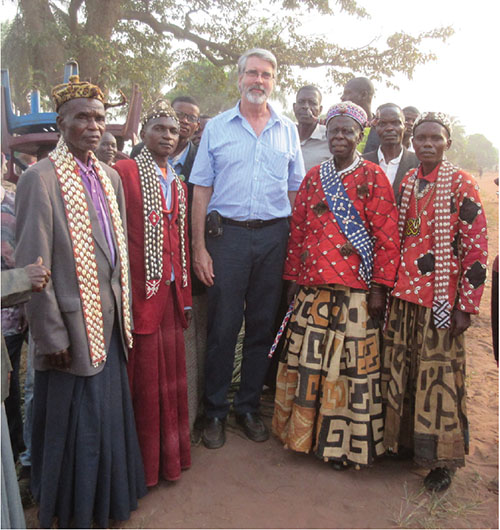By Inge Sthreshley
C
hief Kibulungu and his people had no idea what was in store for them when the ASSP construction team stopped at their village, and vice versa. Kibulungu, a large village on the road between Nyanga and Tshikapa, had been selected as a site for construction of a health center. But before a health center could be built, the chief of the village needed to sign a letter ceding the land for the health center to the government.
The ASSP construction team met with Chief Kibulungu to start the discussion and process. As the team talked with Chief Kibulungu, they learned that in the 1980s he had set aside a large area of land in the middle of the village for a health center. He wrote letters to parliament asking for assistance in building it and even went to Kinshasa to deliver a letter personally.
There was no response.
Over the years, the chief had also asked various groups if they could help, to no avail. Now he was an old man and thought that he would die without seeing a health center built. After talking with the construction team, Chief Kibulungu immediately wrote a letter and called in his notables to sign too.
When the ASSP construction team “builds” a new health center, they don’t build the health center for the community; they build it with the community.
They usually send in only one person, a construction supervisor. The rest of the team is recruited from the village, and the supervisor takes the crew through all the steps of building. Evan Schellenberg, who leads the ASSP construction unit, says they do this intentionally because they want to develop the capacity of the local people to build for themselves. He hopes in the future other projects will be able to build schools because they will find local people who are now skilled and experienced in construction.
For example, when the Kibulungu construction started, one young man was hired as a mason’s assistant without any previous training, but by the end of the project he was an excellent mason. One day as he was working on the health center, he said to a construction team member, “My wife is pregnant. I never dreamed that I would ever be building the health center in which my child will be born.”
A couple of months into construction, the community got wind that Larry Sthreshley, who directs the ASSP project, and representatives from UK aid, which funds the ASSP project, were coming to the area. They stepped up work on the health center and finished it in time for their visit. They put together an inauguration ceremony using their own means. Half an hour before the inauguration ceremony a woman was brought to the health center with obstructed labor. The case was too complicated for the local health center nurse, but the health zone doctor who had come for the ceremony was able to save the mother and baby—and the baby was named Larry.
At the ceremony Chief Kibulungu said: “Now I can die happy. My people have a health center.”
Kibulungu health center is just one of 200 new health centers being built and 250 health centers being renovated through the ASSP project. Currently many of the health facilities are just stick-and-mud brick construction, with thatched roofs and dirt floors. Through ASSP, nearly 4.5 million people will have a new or a renovated health center in their community made of compressed brick, with cement floors and tin roofs, furnished with beds and medical equipment.




